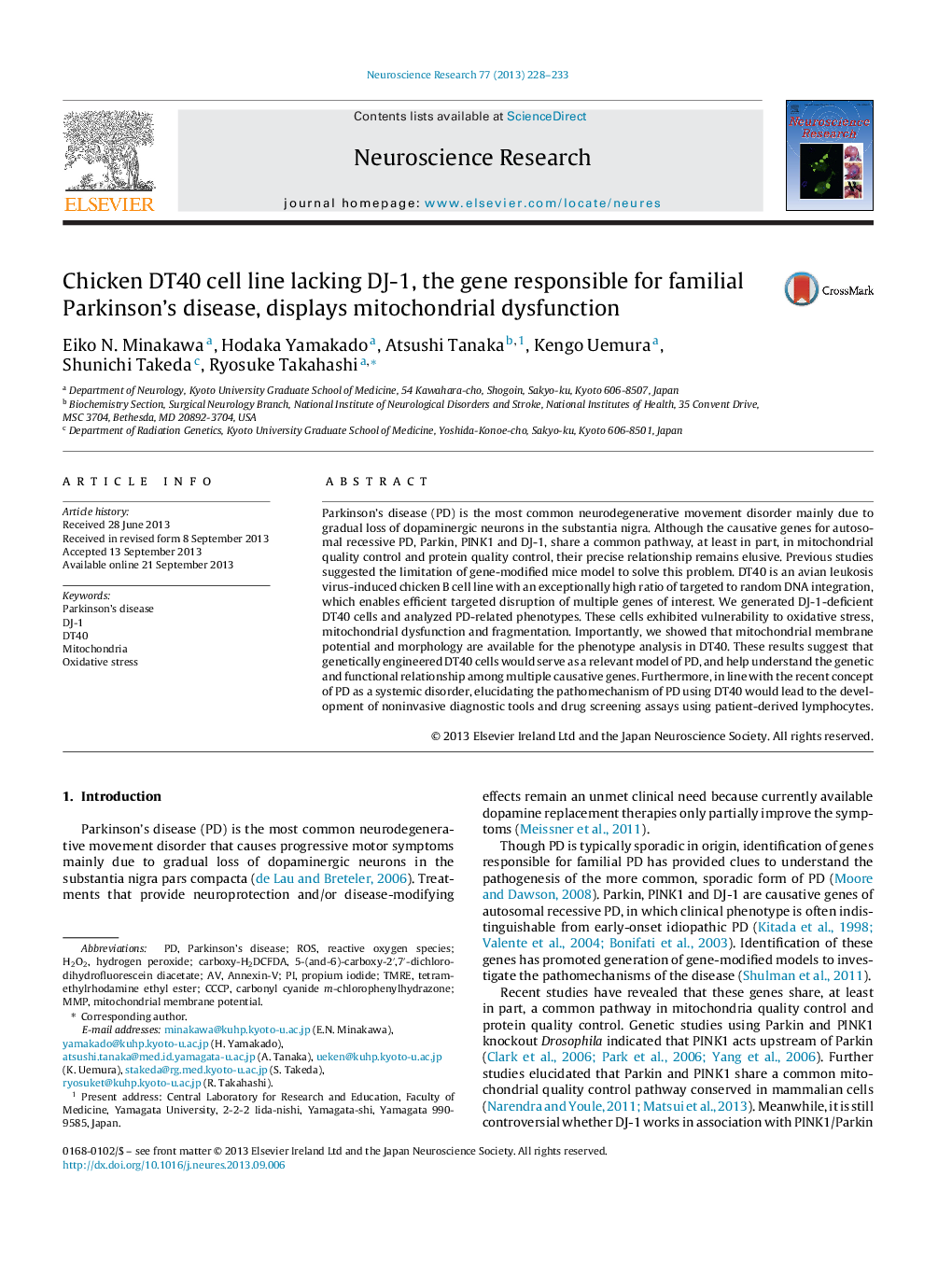| Article ID | Journal | Published Year | Pages | File Type |
|---|---|---|---|---|
| 4351539 | Neuroscience Research | 2013 | 6 Pages |
Abstract
Parkinson's disease (PD) is the most common neurodegenerative movement disorder mainly due to gradual loss of dopaminergic neurons in the substantia nigra. Although the causative genes for autosomal recessive PD, Parkin, PINK1 and DJ-1, share a common pathway, at least in part, in mitochondrial quality control and protein quality control, their precise relationship remains elusive. Previous studies suggested the limitation of gene-modified mice model to solve this problem. DT40 is an avian leukosis virus-induced chicken B cell line with an exceptionally high ratio of targeted to random DNA integration, which enables efficient targeted disruption of multiple genes of interest. We generated DJ-1-deficient DT40 cells and analyzed PD-related phenotypes. These cells exhibited vulnerability to oxidative stress, mitochondrial dysfunction and fragmentation. Importantly, we showed that mitochondrial membrane potential and morphology are available for the phenotype analysis in DT40. These results suggest that genetically engineered DT40 cells would serve as a relevant model of PD, and help understand the genetic and functional relationship among multiple causative genes. Furthermore, in line with the recent concept of PD as a systemic disorder, elucidating the pathomechanism of PD using DT40 would lead to the development of noninvasive diagnostic tools and drug screening assays using patient-derived lymphocytes.
Keywords
Related Topics
Life Sciences
Neuroscience
Neuroscience (General)
Authors
Eiko N. Minakawa, Hodaka Yamakado, Atsushi Tanaka, Kengo Uemura, Shunichi Takeda, Ryosuke Takahashi,
